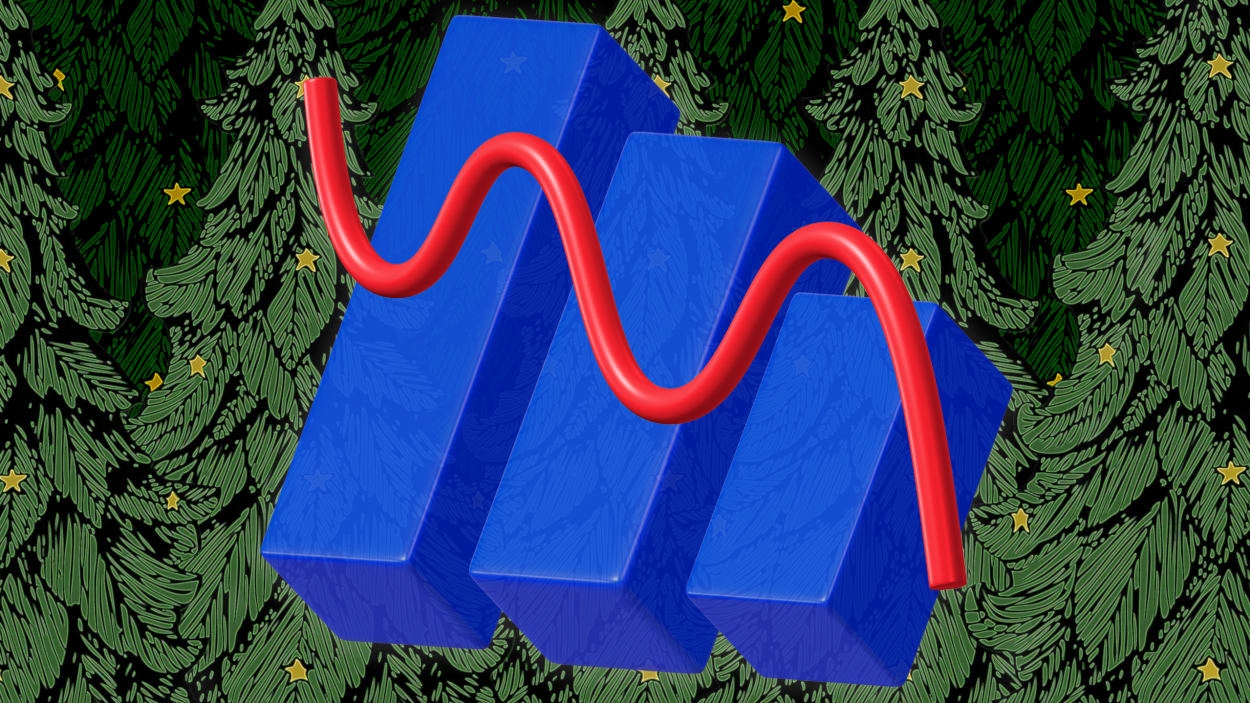Blame the 2008 financial crisis for your super-expensive Christmas tree in 2022
Putting up and decorating a Christmas tree is a holiday tradition for millions of American families. But this year, many are finding that their Christmas tree is costing a little more green than anticipated.
The typical cost for a Christmas tree was roughly $70 in 2021, according to data from the National Christmas Tree Association. But this year, it could be even higher—and some people may encounter prices north of $100, depending on where they live. In all, the Christmas tree industry has been bushwhacked in recent years, and current economic conditions aren’t helping. As such, Christmas tree price increases are due, in part, to inflation, as producers, wholesalers, and retailers all contend with higher costs.
“Inflation has affected growers and is leading to production cost increases of 5%-20%,” says Jill Sidebottom, a seasonal spokesperson with the National Christmas Tree Association, who has 30 years of experience working in the Christmas tree industry. The main factors that determine prices are the quality of an individual tree, the specific retailer selling it, the location of that retailer, and transport costs. Climate change may also play a role. As a result of higher prices at almost every stage, for producers to retailers, she says that 98% of Christmas tree growers are increasing prices on the roughly 21 million trees that they will produce this year.
But the overall supply of Christmas trees in the U.S. market is what can really sway prices, and this year, Sidebottom says that there’s still a relative shortage. “Since 2016, we’ve had an undersupply, and that should be the case for another couple of years,” she says.
The shortage or undersupply of Christmas trees dates back to around 2008 when the economy plunged, and growers found themselves in a precarious position—but it wasn’t due to consumers tightening their belts, necessarily. Tree growers simply had too many big trees to sell.
“Back in the economic downturn, there was an oversupply of large trees,” Sidebottom says. Large trees are harder to sell, as fewer people can fit them in their homes. As a result, growers end up using only part of a tree in order to sell it, driving only a portion of the revenue that they had hoped to get from selling a bigger tree. “It wasn’t that demand dropped, it was that growers couldn’t get what they needed out of the trees, so they didn’t plant as many,” she says.
And that, by and large, is where the seeds of the current Christmas tree shortage were planted.
Too many trees were planted during the 1990s, and too few were planted in the 2000s—the market is still trying to regain a sense of equilibrium. The good news is that more trees are currently growing and should be ready to harvest in the years ahead, satisfying growing demand, and potentially bringing prices down.
In the meantime, consumers should still be able to find a Christmas tree, even if it’s not cheap by historical standards.
“Our annual consumer survey showed that 86% of real Christmas tree buyers said they had no problems finding a place nearby to buy their tree last year,” said Marsha Gray, Executive Director of the Real Christmas Tree Board, in a statement. “The real Christmas tree industry met demand last year and it will meet demand this year.”
(10)



